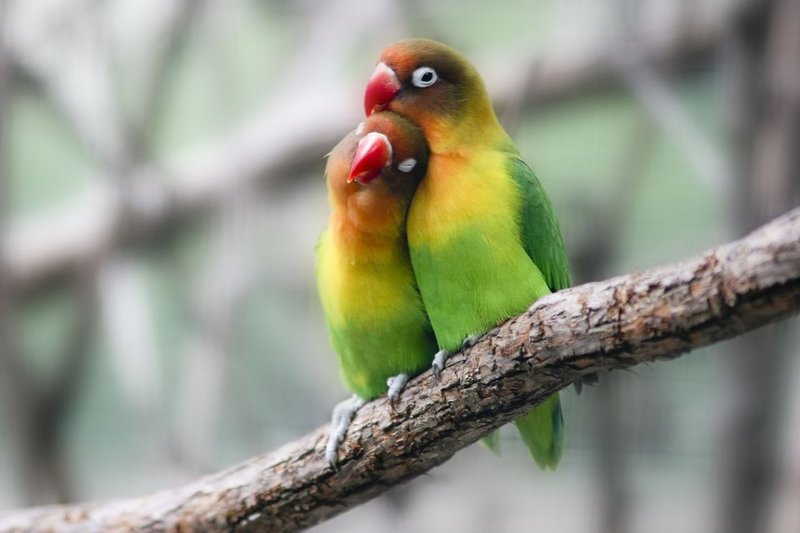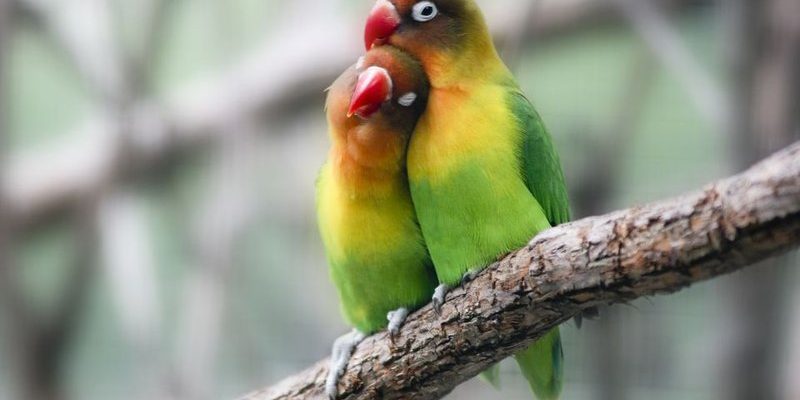
Let’s break it down over a virtual coffee. Imagine two friends sitting at a café, casually chatting about these lovely birds. One friend mentions that lovebirds are more than just cute pets; they’re part of a complex ecosystem. Just as we wouldn’t want our favorite coffee shop to close down, we don’t want our feathered friends to disappear from the wild. So, what does the situation look like for lovebirds in the wild?
Understanding Lovebirds and Their Habitats
Lovebirds are small parrots that are native to Africa, particularly in regions like the subtropical and tropical forests of the continent. These birds are known for their strong pair bonds, often seen cuddling or preening each other. There are nine species of lovebirds, including the popular Peach-faced and Fischer’s lovebirds. Each has its unique traits, colors, and behaviors that add to their charm.
Their habitats typically range from woodlands to grasslands, and they build nests in tree hollows. Unfortunately, habitat loss is a major threat to these birds. As forests are cleared for agriculture or urban development, lovebirds lose the safe, natural spaces they need to thrive. Without proper habitats, their survival is increasingly at risk.
The Conservation Status of Lovebirds
So, are lovebirds considered threatened or endangered? The answer varies by species. The International Union for Conservation of Nature (IUCN) keeps track of wildlife conservation status and rates many lovebird species as of “Least Concern.” However, some groups, like the Red-faced Lovebird, face more significant threats and are categorized as endangered. When a species is labeled endangered, it means there’s a real possibility that it could become extinct if conditions don’t change.
It’s important to pay attention to these classifications. When we understand the conservation status of different lovebird species, we can better advocate for their protection and the preservation of their habitats. Think of it like checking the weather before heading out—knowing the conditions helps you prepare for what lies ahead.
Threats Facing Lovebirds in the Wild
Lovebirds face multiple threats in their natural habitats. Here are the primary issues impacting their survival:
- Habitat Destruction: As we discussed earlier, deforestation for farming and urban development is a significant issue. This destruction not only removes their nesting sites but also affects their food sources.
- Climate Change: Changes in climate can disrupt the ecosystems lovebirds rely on. Warmer temperatures and altered rainfall patterns could impact their breeding cycles and food availability.
- Poaching and Illegal Trade: Lovebirds are often captured for the pet trade, which can severely reduce their wild populations. If a bird becomes popular as a pet, the demand can lead to overharvesting.
Addressing these threats is crucial for the survival of lovebirds. Conservation efforts are ongoing, but they require community support and involvement to be effective.
Conservation Efforts for Lovebirds
Conservation groups around the world are working hard to protect lovebirds and their habitats. These efforts often include:
- Habitat Restoration: Organizations may work to restore deforested areas, helping to create safe spaces where lovebirds can live and thrive.
- Legal Protection: Some countries have laws in place to protect lovebird species from poaching and illegal trade, making it harder for traffickers to exploit them.
- Public Awareness Campaigns: Educating the public about the threats lovebirds face and the importance of conservation can lead to more support and action for their protection.
You might be wondering how you can contribute to these efforts. Simple actions, like supporting conservation organizations or spreading awareness, can make a difference. Just like a small drop can create ripples in a pond, every action counts.
The Role of Lovebirds in Their Ecosystem
Lovebirds don’t just add a splash of color to our lives; they play essential roles in their ecosystems, too. For instance, they help with seed dispersal. When lovebirds eat fruit and seeds, they inadvertently help plants grow by spreading those seeds through their droppings. This process is vital for maintaining the health and diversity of their habitats.
By understanding the ecological roles of lovebirds, we can appreciate their importance beyond their charming appearance. Protecting lovebirds means protecting the intricate ecosystems they are part of, which in turn benefits countless other species. It’s a beautiful cycle of life!
Finding Lovebirds in the Wild vs. as Pets
If you’re considering bringing a lovebird into your home, it’s important to understand the difference between wild and pet lovebirds. Wild lovebirds are often shy and may not be as colorful as some domestic breeds. Pet lovebirds, on the other hand, can be more social and outgoing due to their interaction with humans.
However, it’s crucial to adopt responsibly. Always choose to adopt from reputable sources rather than purchasing from pet stores that may obtain their birds from unethical supply chains. By supporting responsible breeding and adoption, you contribute to the conservation of lovebirds in the wild.
The future of lovebirds hangs in the balance, impacted by various threats and conservation efforts. With awareness and action, we can help protect these delightful creatures. Remember, every little effort matters—whether it’s supporting local conservation programs, educating others about their ecological importance, or simply enjoying their beauty from a distance.
By embracing a caring approach to wildlife, we can ensure that lovebirds continue to thrive both in the wild and in our homes. So, let’s do our part to keep these enchanting birds flying high. After all, lovebirds deserve a chance to soar freely in the skies.

